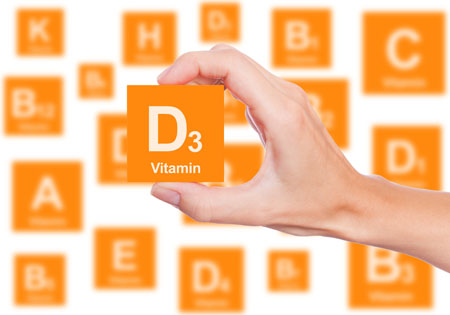Trace Amounts of Lithium in Drinking Water Associated with Lower Suicide Rates in Men
Studies in Japan, Austria, and Texas have reported that trace amounts of lithium in drinking water are associated with lower suicide rates. A new study seeks to clarify these findings by removing any statistical factors other than lithium levels that could produce these results.
The study, published in the Journal of Clinical Psychiatry, collected 434 lithium samples in drinking water over three years, and compared these with suicide rates in the population of 274 municipalities of Kyushi Island in Japan.
The researchers, led by Nobuyoshi Ishii, then controlled for size of population, proportion of elderly people, proportion of one-person households, proportion of people with a college education or more, proportion of people engaging in primary industry, overall unemployment rates, annual marriage rates, annual mean temperature, and annual savings in per person in Japan’s popular postal bank. In places with slightly higher trace levels of lithium in drinking water, there was a lower rate of suicides in men. Suicide rates for women and overall were not significantly associated with lithium levels.
Low Vitamin D Levels in Childhood Can Predict Hardening of the Arteries in Adulthood
A new study from Finland suggests that low vitamin D levels in childhood and adolescence can predict atherosclerosis, or hardening of the arteries, in adulthood. The study, by Markus Juonala and colleagues in the Journal of Clinical Endocrinology & Metabolism, included 2,148 people whose vitamin D levels were measured at ages 3–18. They were checked for atherosclerosis at ages 30–45. Those participants with the lowest levels of vitamin D in their youth were at much higher risk for thickened arteries as adults. The finding was independent of other cardiovascular risk factors such as smoking, high blood pressure, poor eating, lack of exercise, and obesity.
Editor’s Note: While it is not yet clear if low vitamin D levels directly cause the development of atherosclerosis, it is important to maintain sufficient vitamin D in childhood for a host of reasons, including strong bones. Children with sufficient vitamin D levels are more likely to have normal moods and behavior than those deficient in vitamin D.
Maternal Warmth Does Not Negate Corporal Punishment
New research shows that expressions of maternal warmth following corporal punishment do not reduce children’s anxiety, and may even increase it.
The study by Jennifer E. Lansford and colleagues was published in the Journal of Clinical Child & Adolescent Psychiatry. The researchers interviewed over a thousand children aged 7–10 and their mothers about what type of physical punishment occurs in their family, and about anxiety and aggression in the children. They followed up again after one and two years. The study took place in eight countries: China, Colombia, Italy, Jordan, Kenya, the Philippines, Thailand, and the United States.
In general, corporal punishment increased anxiety in the children, while maternal warmth decreased it. How warmth and physical punishment interacted depended on the country. Anxiety increased over time in families where the mothers were high on both corporal punishment and warmth. Lansford and colleagues wrote that it might be “simply too confusing and unnerving for a child to be hit hard and loved warmly all in the same home.”
The researchers suggest that parents use nonphysical ways to promote desirable behavior in their children, including putting younger children in time-out and requiring teenagers to participate in activities that help others.
Mother’s Treatment for Depression Can Affect Children’s Symptoms
Studies have found that when a depressed mother’s symptoms remit, her children are less likely to show psychiatric symptoms. A new study by Myrna M. Weissman and colleagues in the American Journal of Psychiatry randomized 76 mothers to treatment with escitalopram, bupropion, or a combination of the two, and assessed the impact of the mothers’ treatment on their 135 children (aged 7–17).
There were no significant differences in the mothers’ symptoms or remission, but children’s depressive symptoms and functioning improved more if their mothers received (only) escitalopram. Only in that group was a mother’s improvement associated with her children’s improvement.
Mothers in the escitalopram group reported greater improvement in their ability to listen and talk to their children compared to the mothers in other groups, and the children of the mothers in the escitalopram group reported that their mothers were more caring.
Children of mothers with low negative affect improved significantly, while children of mothers with high negative affect only improved if their mothers were in the escitalopram group.
The authors suggest that for a mother’s improvement to help her children’s symptoms, her anxious distress and irritability must be reduced, and these may be better targeted with escitalopram than bupropion.
High Blood Pressure is a Marker of Good Response to Prazosin in PTSD
Prazosin, an alpha-1 adrenoreceptor antagonist, has been found to be effective at reducing symptoms of post-traumatic stress disorder (PTSD), including nightmares. Researchers led by Murray Raskind hypothesized that there may be a link between blood pressure and response to prazosin, since resting blood pressure can be used to measure alpha-1 adrenoreceptor responsiveness. In a study of active duty combat soldiers with PTSD, higher resting blood pressure and smaller drop in blood pressure when going from lying down to standing up predicted a better response to prazosin.
The researchers believe that blood pressure can be used to estimate the central nervous systems’s responsiveness to norepinephrine, which prazosin blocks. In patients with PTSD who received placebo instead of prazosin, blood pressure did not predict improvement. Raskind and colleagues hope to be better able to predict response to prazosin in PTSD by measuring patients’ baseline blood pressure.
Exposure to Stress Hormone Leads to Poor Decision-Making
Adolescence may be a period of particular vulnerability to the effects of stress. New research by Shannon Gourley indicates a possible mechanism for this vulnerability. When Gourley exposed adolescent mice to low levels of the stress hormone corticosterone (the equivalent to human cortisol), they developed habit-based rather than goal-oriented decision-making, leading to behaviors that resembled human depression, which lasted into adulthood. Adult mice that were exposed to the low levels of corticosterone were not affected by it.
Gourley also used an alternative method of producing these stress responses a second time by silencing the trkB receptor for brain-derived neurotrophic factor (BDNF) in the amygdala and hippocampus of the mice. The depression-like behaviors that resulted, such as lack of motivation, were able to be reversed by treating the mice with 7,8-dihydroxyflavone, a drug that activated the trkB receptor. In the adolescent mice, this treatment had antidepressant effects that lasted into adulthood, even though the treatment stopped earlier.
Short Telomeres in a Rat Model of Depression, Lithium Reverses Abnormality
Telomeres are repeated DNA sequences that sit at the end of chromosomes and protect them during cell replication. Telomeres get shorter with aging and with stressors or psychiatric illnesses. Researcher Alexandre Mathe and colleagues recently found that in a line of rats bred to be more susceptible to stress and depression-like behavior, hippocampal telomeres were shorter than in normal rats or rats bred to be less susceptible. The susceptible rats also had lower levels of enzymes that maintain telomere length. Both telomerase activity and Tert (telomerase reverse transcriptase) expression were reduced in the susceptible rat compared to the other rats. However, lithium reversed the low levels of telomerase activity and Tert expression.
Editor’s Note: Lithium increases hippocampal volume in people, and also increases human telomerase. Researcher Lina Martinsson reported in 2013 that lithium increases telomere length in white cells. Now lithium has increased hippocampal telomerase in a rat model of depression. Short telomeres are associated with aging and increased vulnerability to a wide range of medical and psychiatric disorders. Since people with bipolar disorder are prone to memory problems, medical problems, and short telomeres, they might want to talk to their physician about including lithium in their treatment regimen, if they are not already taking it.
Gene CACNA1C is Associated with Early-Onset Bipolar Disorder
Several genes have previously been implicated in bipolar illness. In a recent study, researchers at the Mayo Clinic, led by Paul Croarkin, compared variations in three genes (CACNA1C, ANK3, and ODZN) across 69 children aged 6–15 with mania, a 776-person control group from the Mayo Biobank database, and 732 adults with bipolar disorder (some with onset in childhood and adolescence and some with onset in adulthood, also from the Biobank). All participants were Caucasian, to minimize confounding by population stratification. The researchers found that the minor allele of rs10848632 in CACNA1C was associated with childhood onset of bipolar disorder. The haplotype (or sequence of nucleotides) T-G-G-T was the one associated with risk. Genetic risk scores were also associated with early onset of illness.
Editor’s Note: In research by Michael McCarthy and colleagues, CACNA1C has been linked to abnormal circadian rhythms in bipolar disorder and to responsiveness to lithium treatment. Together, these data suggest the importance of studying the calcium channel blocker nimodipine (which blocks calcium influx through CACNA1C) in childhood-onset bipolar disorder. A 1999 case report by Pablo A. Davanzo and colleagues described a teenager with ultra rapid cycling bipolar disorder (multiple mood switches/day) that did not respond to a host of conventional medications, who improved dramatically on nimodipine, reaching remission. This author (Robert M. Post) has also seen confirmed responsivity in adults with rapid cycling bipolar disorder (reported in the 2008 book Treatment of Bipolar Illness: A Casebook for Clinicians and Patients, by Post and Gabriele S. Leverich).
White Blood Cells Can Convey Resilience to Stress
Mice subjected to chronic defeat stress (being placed in the home cage of a larger, more aggressive mouse) behave in ways that resemble human anxiety and depression. In new research by Miles Herkenham and colleagues at the National Institute of Mental Health, in which they explored the adaptive immune system’s affect on mood, mice exposed to this type of stress showed increases in inflammatory cytokines in the blood (including TNFalpha, IL-1beta, IL-2, IL-3, IL-6, IL-17, and IFNgamma) compared to a control group. Interestingly, when white blood cells (lymphocytes) from stressed animals were transferred to a new set of animals, the recipient mice seemed to benefit from greater resilience to stress in a variety of ways.
Mice that received white blood cells from defeat-stressed animals had lower levels of TNFalpha, IL-1beta, IL-2, IL-3, and IL-17 than a control group that received white blood cells from unstressed mice. The recipient mice also exhibited reduced anxious and depressive behaviors in a litany of behavioral tests compared to both the group that received white blood cells from unstressed mice and a group that received a saline injection instead. Lastly, the recipients of the white blood cells from stressed animals showed more new neurons in the dentate gyrus of the hippocampus. (Hippocampal neurogenesis is decreased by stressors and increased by antidepressants.)
Herkenham and colleagues concluded that psychopathology is not just a downward spiral—the immune system plays an active role in adapting to stress, with lymphocytes being programmed by stress to provide antidepressant functions.
Editor’s Note: These data add a new twist to the studies of Scott Russo, who found that IL-6 secreted by white cells of animals subject to defeat stress was the cause of the depressive-like behaviors they exhibited. If IL-6 was blocked, the behaviors did not occur. Now it would appear from Herkenham’s work that something about the timing, the type of cytokines, or the transfer of the white cells conveyed protective antidepressant-like effects in this case.
Childhood Adversity, Gene Methylation, and Internalizing Behaviors Linked
Life experiences such as adversity in childhood have been linked to epigenetic changes to DNA. These changes do not affect the sequence of DNA, but can change how tightly DNA is wound, and thus how easily it is transcribed. One epigenetic change that can occur following adversity in childhood is methylation of the gene for the glucocorticoid receptor (NR3C1). A recent study by Kathryn Ridout and colleagues examined links between early adversity, methylation of this gene, and behavioral problems in childhood. Adversity was linked to methylation of the gene at exons 1D and 1F in the promoter of NR3C1. Methylation of the gene was associated with internalizing behaviors (e.g. depression, anxiety) but not externalizing behaviors (e.g. attention deficit hyperactivity disorder (ADHD) or oppositional defiant disorder) in children of preschool age. The NR3C1 methylation was a significant mediator of the internalizing behaviors in children who had experienced adversity.
Editor’s Note: Similar associations of methylation of the glucocorticoid receptor with childhood adversity have been reported in other clinical and animal studies and provide a mechanism for the long-lasting adverse effects of stressors in childhood.











